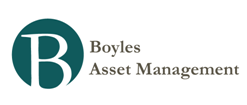Money and Finance
Tim Ferriss interviews Peter Diamandis (LINK)
The Hedge Fund Manager Who Nailed The Oil Crash Made $1 Billion From His Bet Against Oil (LINK)
Andrew Smithers: The political consequences of poor economics (LINK)
Venezuela’s economic collapse owes a debt to China (LINK)
- Links
This looks like a great event if you're in NYC on November 11th: Berkshire Hathaway 50th Anniversary Symposium [H/T @CunninghamProf] (LINK) Creating an ideal environment for optimal investment decision making (LINK) THE NOT TO DO LIST (LINK)...
- Links
Nassim Nicholas Taleb's interview at the Tomorrow Conference in June 2015 (video) [H/T ValueWalk] (LINK) Related book: AntifragileRichard Thaler talks to Barry Ritholtz about his book, Misbehaving: The Making of Behavioral Economics (LINK)...
- Links
David Kass' notes from the Berkshire Hathaway Annual Meeting (LINK) IAEA Board Approves Agreement for Hosting the IAEA’s LEU Fuel Bank [H/T Linc] (LINK) [Related 2006 article: Mr. Buffett’s Excellent Idea] Richard Thaler visits the London...
- Links
Presentations from The Ben Graham Centre’s 2015 Value Investing Conference [H/T ValueWalk] (LINK) Nestle chairman: Heinz owners have 'pulverized' the food industry [H/T Matt] (LINK) The Apollo Asia Fund's Q1 Report (LINK) Horizon...
- Kyle Bass: The Looming Crises In Asia
Link to: Kyle Bass: The Looming Crises in Asia For the last several years, nobody has been more outspokenly bearish on Japan than Kyle Bass. In a recent talk, Bass reiterated his doubts about Japan’s chances of averting a debt crisis. What’s...
Money and Finance
Links
Tim Ferriss interviews Peter Diamandis (LINK)
Related book: Bold: How to Go Big, Create Wealth and Impact the WorldScott Adams: From Magic to Science (sort of) (LINK)
Related book: How to Fail at Almost Everything and Still Win Big (The MP3 CD is still priced low as well, currently at $8.19)TED Talk - Matthieu Ricard: How to let altruism be your guide (LINK)
Related book: Happiness: A Guide to Developing Life's Most Important SkillPaul Graham: The Ronco Principle (LINK)
The Hedge Fund Manager Who Nailed The Oil Crash Made $1 Billion From His Bet Against Oil (LINK)
Andrew Smithers: The political consequences of poor economics (LINK)
Venezuela’s economic collapse owes a debt to China (LINK)
It is hard to exaggerate the magnitude of the Venezuelan collapse. People are queueing for hours to buy food, stores are empty, and the country is in a deep recession. Venezuela has the fastest inflation in the world, while its government debt is the most expensive to insure against default.
How did we get here? Venezuela used the period of high oil prices to quadruple its public foreign debt, in order to fuel a domestic spending boom. By 2012, when Venezuelan oil averaged $103, the country was spending as if the price was $194, running up a fiscal deficit of 17.5 per cent of gross domestic product. That is why the economy went into crisis in early 2014, when the oil price was still $100. The recent drop has just made a hopeless situation worse. Who gave the country the rope with which to hang itself? Mostly China.
China started to lend massively to Venezuela in 2007. Since then it has lent more than $45bn, of which about $20bn is still outstanding. After a visit to Beijing on January 8, President Nicolás Maduro said he had won further “investment”.
What makes China unusual is not just the amount it is willing to lend but the way it lends. First, Beijing has chosen to be opaque: we know neither the terms of the loans nor the uses of the money. The debt is repaid in oil, making Wall Street bondholders junior to China.
- Links
This looks like a great event if you're in NYC on November 11th: Berkshire Hathaway 50th Anniversary Symposium [H/T @CunninghamProf] (LINK) Creating an ideal environment for optimal investment decision making (LINK) THE NOT TO DO LIST (LINK)...
- Links
Nassim Nicholas Taleb's interview at the Tomorrow Conference in June 2015 (video) [H/T ValueWalk] (LINK) Related book: AntifragileRichard Thaler talks to Barry Ritholtz about his book, Misbehaving: The Making of Behavioral Economics (LINK)...
- Links
David Kass' notes from the Berkshire Hathaway Annual Meeting (LINK) IAEA Board Approves Agreement for Hosting the IAEA’s LEU Fuel Bank [H/T Linc] (LINK) [Related 2006 article: Mr. Buffett’s Excellent Idea] Richard Thaler visits the London...
- Links
Presentations from The Ben Graham Centre’s 2015 Value Investing Conference [H/T ValueWalk] (LINK) Nestle chairman: Heinz owners have 'pulverized' the food industry [H/T Matt] (LINK) The Apollo Asia Fund's Q1 Report (LINK) Horizon...
- Kyle Bass: The Looming Crises In Asia
Link to: Kyle Bass: The Looming Crises in Asia For the last several years, nobody has been more outspokenly bearish on Japan than Kyle Bass. In a recent talk, Bass reiterated his doubts about Japan’s chances of averting a debt crisis. What’s...

